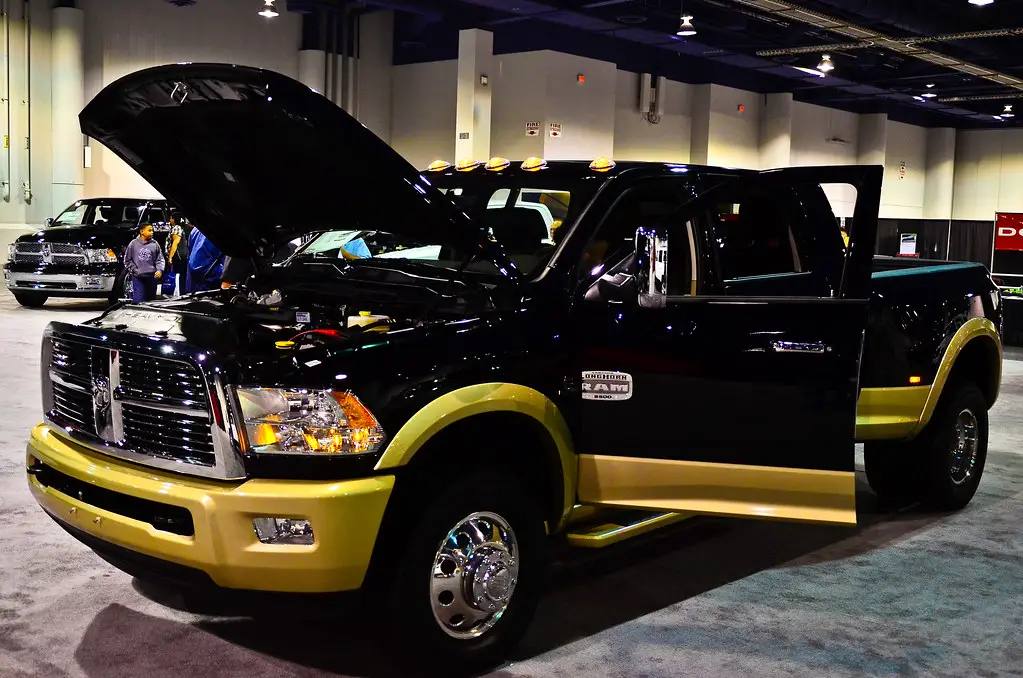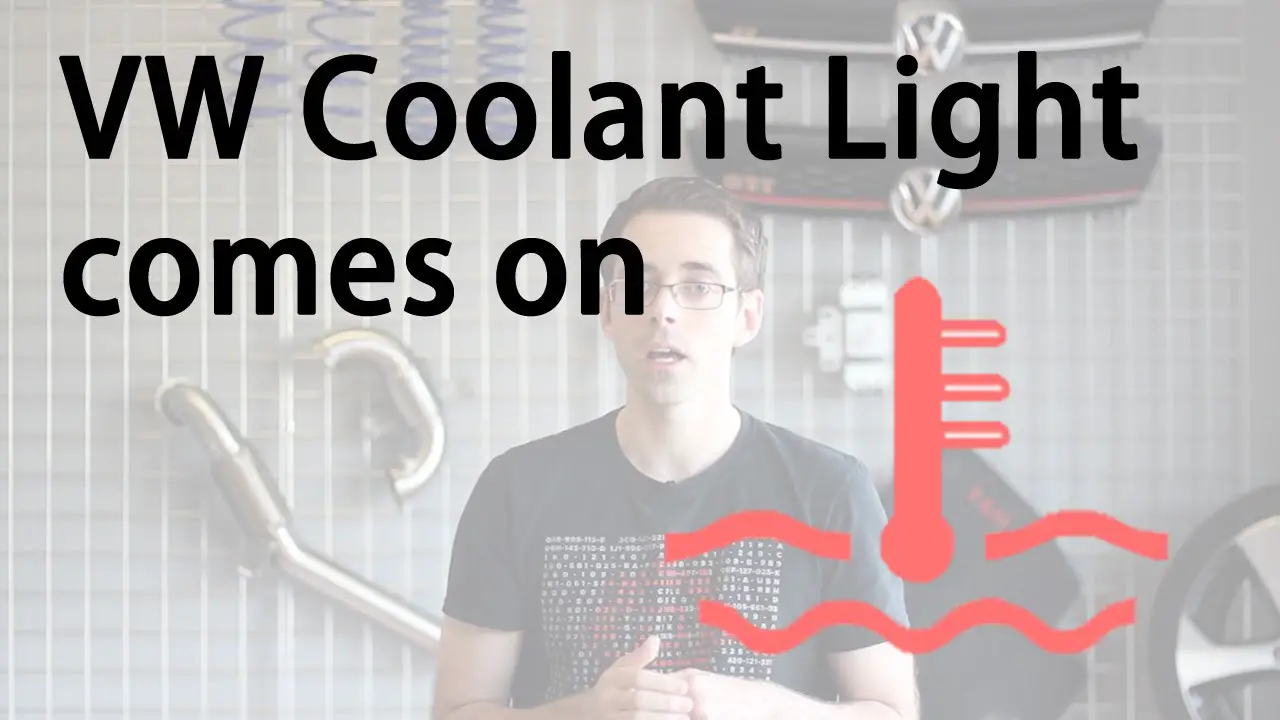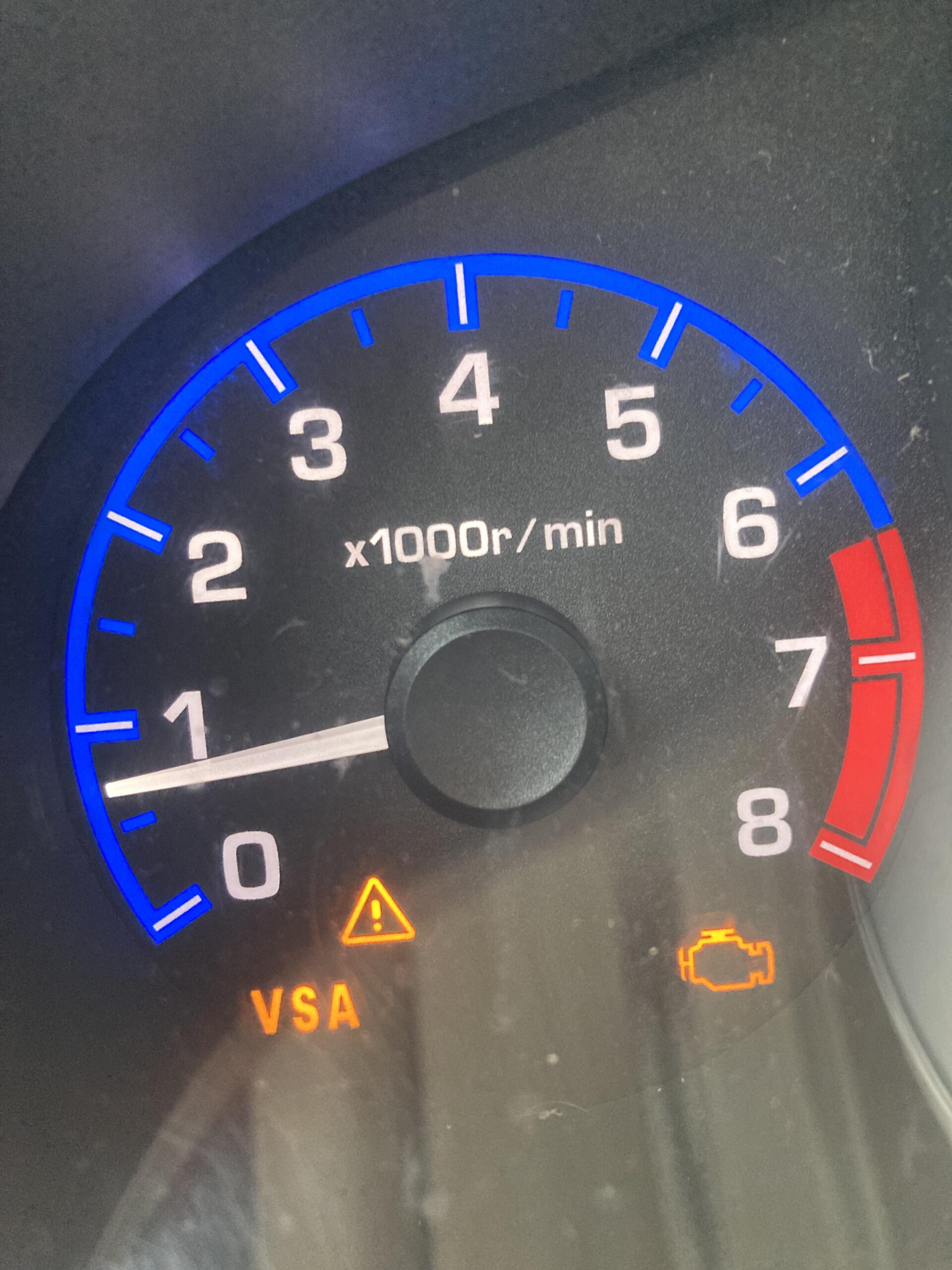As a 2016 Dodge Ram 3500, you may have encountered some of the common problems that plague this heavy-duty truck.
From engine stalls and brake failures to electrical glitches and air conditioning issues, the 2016 Dodge Ram 3500 has been the subject of many complaints.
This leads to recalls by its owners and the National Highway Traffic Safety Administration (NHTSA).
These problems can not only affect your driving performance and comfort but also pose serious safety risks for you and your passengers.
That’s why it’s important to fix them as soon as possible before they cause more damage or lead to a costly breakdown.
But how do you know what’s wrong with your 2016 Dodge Ram 3500, and how do you fix it? That’s what this article is here to help you with.
We’ll go over some of the most common 2016 Dodge Ram 3500 problems, their causes, symptoms, and solutions.
We’ll also give you some tips on how to prevent these problems from happening again, or how to avoid them altogether if you’re planning to buy a 2016 Dodge Ram 3500.
Therefore, you’ll have a better understanding of what’s going on with your 2016 Dodge Ram 3500, and what you can do to make it run smoothly and safely.
So, let’s get started. Here are the 2016 Dodge Ram 3500 problems you need to know about, and how to fix them fast.
What Are The 2016 Dodge Ram 3500 Problems?
Here are some commonly reported problems with the 2016 Dodge Ram 3500.
-
Engine Problems
Engine troubles: The engine may have difficulty starting, stall unexpectedly, make strange noises, or even catch fire. These problems may be caused by faulty fuel injectors, wiring harnesses, sensors, or software. The company has issued several recalls and service bulletins to address these issues.
Turbocharger failure: The turbocharger may fail prematurely, resulting in reduced power, increased fuel consumption, or engine damage. This problem may be caused by poor oil quality, inadequate cooling, or excessive exhaust gas pressure. The company may offer to replace the turbocharger under warranty or goodwill2.
Cylinder issues: Some owners have experienced problems with specific cylinders, such as dropped cylinders or excessive oil consumption.
Emissions system problems: Issues with the Diesel Exhaust Fluid (DEF) system or other emissions components have been reported.
-
Transmission Problems
Transmission slipping: This occurs when the transmission fails to engage properly, causing a delay in acceleration or a loss of power1. This problem may be caused by defective valve bodies, solenoids, clutches, or torque converters23.
Transmission hesitation: This occurs when the transmission hesitates while shifting gears, making it difficult to accelerate smoothly. This problem may be caused by worn or loose steering components, such as tie rods, ball joints, or stabilizer bars.
-
Electrical Issues
Dashboard lights flickering and no engine crank: This may be caused by a weak battery, corrosion on battery terminals, or bad ground connection1. These problems may prevent the truck from starting or cause other electrical glitches.
Transmission slipping: This may be caused by faulty electronic transmission control modules, defective valve bodies, solenoids, clutches, torque converters, or worn or loose steering components. These problems may affect the transmission’s ability to shift gears smoothly or fail.
Tipm problems: The Totally Integrated Power Module (TIPM) can malfunction, causing various electrical issues throughout the vehicle.
Battery drain: Excessive battery drain can lead to starting problems.
-
Steering Problems
Steering wheel vibration: This occurs when the steering wheel shakes or shimmies while driving, especially at high speeds or on rough roads. This problem may be caused by worn or loose steering components, such as tie rods, ball joints, or stabilizer bars These components connect the steering wheel to the wheels and help maintain the alignment and stability of the vehicle. If they are damaged or loose, they can cause the steering wheel to vibrate or wobble.
Steering alignment issues: This occurs when the vehicle pulls to one side or the other while driving, or when the steering wheel is not centered when the wheels are straight. This problem may be caused by improper alignment of the wheels, uneven tire wear or pressure, or damage to the suspension or frame. These factors can affect the balance and direction of the vehicle and make it harder to steer.
Steering linkage failure: This occurs when the steering linkage, a system of rods and joints that connects the steering wheel to the steering box and the wheels, breaks or separates. This problem may be caused by excessive stress or wear on the linkage components, corrosion or rust, or defective manufacturing. This problem can cause a loss of steering control and increase the risk of crashes.
-
Cracked dashboards Problems
This occurs when the dashboard develops cracks or breaks into pieces, exposing the underlying equipment and wiring. This problem may be caused by sun exposure, heat, or poor quality of the plastic material. These factors may degrade the plastic over time, making it brittle and prone to cracking.
-
Suspension issues
Suspension collapse: This occurs when the suspension system fails to maintain the proper ride height or level of the vehicle, causing it to sag or drop to the ground. This problem may be caused by leaking or ruptured air springs, faulty air compressors or dryers, damaged or clogged airlines, or malfunctioning height sensors.
These components are part of the air suspension system, which uses pressurized air to inflate or deflate the air springs according to load and road conditions. If any of these components fail, the air suspension system may lose air pressure and cause the vehicle to collapse.
Suspension noise: This occurs when the suspension system makes squeaking, clunking, rattling, or banging noises while driving, especially over bumps or rough roads. This problem may be caused by worn or loose suspension components, such as bushings, ball joints, control arms, shocks, or sway bars.
These components connect the wheels to the frame and help control the movement and alignment of the vehicle. If they are damaged or loose, they can cause the suspension system to make noise or affect the handling and steering of the vehicle.
Suspension vibration: This occurs when the suspension system causes the vehicle to shake or shudder while driving, especially at high speeds or under heavy loads. This problem may be caused by unbalanced or misaligned wheels, bent or warped rotors, faulty wheel bearings, or damaged or uneven tires. These factors can affect the rotation and balance of the wheels and cause the suspension system to vibrate or wobble.
Also read: How To Clear Service 4WD Light Ram 2500: Easy Steps To Follow
How To Fix The 2016 Dodge Ram 3500 Problems?

Here is how to fix the 2016 Dodge Ram 3500;
Engine Problems Fix
Perform regular maintenance and inspections to prevent or detect any problems early. Follow your manufacturer’s recommended maintenance schedule and check the vehicle history report, recall status, and service records before making a purchase.
If you experience any turbocharger problems, such as failure, reduced power, increased fuel consumption, or engine damage, check the oil quality, cooling system, and exhaust gas pressure. If necessary, replace the turbocharger under warranty or goodwill.
Electrical issues fix
If you notice any symptoms of power loss, such as difficulty starting, stalling, reduced power, or increased fuel consumption, inspect the fuel system, air intake system, exhaust system, and ignition system for any faults. Replace or repair any components that are faulty or damaged.
Transmission problems fix
If you experience any transmission problems, such as slipping, hesitation, or failure, check the transmission fluid level and quality. If the fluid is low, dirty, or burnt, change it and flush the system. If the problem persists, have the transmission inspected by a professional and replace or repair any defective parts.
Steering problems fix
If you encounter any steering problems, such as vibration, alignment issues, or linkage failure, check the tire pressure and condition. If the tires are unevenly worn or damaged, replace them and balance the wheels. If the problem persists, have the steering system inspected by a professional and replace or repair any worn or loose components.
Cracked Dashboard Problems fix
If you observe any dashboard problems, such as cracking or breaking, protect the dashboard from sun exposure and heat by using a sunshade or a cover. If the dashboard is already cracked or broken, you can try to fix it yourself by using a repair kit or a filler. Alternatively, you can replace the dashboard with a new one or a cover.
Suspension Problems Fix
Here is how to fix Suspension Problems in your 2016 Dodge Ram 3500;
- If you notice any symptoms of suspension collapse, such as sagging or dropping of the vehicle, inspect the air suspension system for any leaks or damage. Replace or repair any components that are faulty or worn, such as the air springs, air compressor, air lines, or height sensors.
- If you experience any suspension noise, such as squeaking, clunking, rattling, or banging, check the suspension components for any wear or looseness. Replace or repair any components that are damaged or loose, such as the bushings, ball joints, control arms, shocks, or sway bars.
- If you encounter any suspension vibration, such as shaking or shuddering of the vehicle, check the wheel alignment and balance. If necessary, adjust the alignment, balance the wheels, or replace the tires. Also, check the rotors and wheel bearings for any damage or warping.
Are 2016 Dodge Ram 3500 Reliable?
The reliability of the 2016 Dodge Ram 3500 receives mixed reviews, with some sources considering it dependable and others highlighting potential issues. Here’s a breakdown of the pros and cons you can use to judge its reliability:
Pros
- Renowned Cummins diesel offers power and durability.
- Handles heavy loads with ease, perfect for trailers.
- Comfortable seating for passengers and ample cargo space.
- Handles rough terrain well due to its powerful engine and suspension.
- Built to last and withstand tough use.
- Available with various amenities for comfort and convenience.
Cons
- Costly repairs
- Below average reliability
- Lower fuel economy
What Transmission Does A 2016 Dodge Ram 3500 Have?
The transmission in a 2016 Ram 3500 depends on the specific engine and configuration:
- 6.7L Cummins Diesel Engine: Paired with a 68RFE (Heavy-Duty 6-speed Automatic) transmission.
- 6.4L HEMI V8 Gasoline Engine: Paired with a 66RFE (6-speed Automatic) transmission.
What Generation Is A 2016 Dodge Ram 3500?
The 2016 Dodge Ram 3500 belongs to the fourth generation of the Ram truck series, which ran from 2009 to 2018. This generation introduced significant updates compared to its predecessors, including a redesigned exterior, improved interior quality, and a wider range of engine and drivetrain options.
How Big Is The Fuel Tank On A 2016 Dodge Ram 3500?
The fuel tank size on a 2016 Dodge Ram 3500 depends on the cab configuration and bed length;
- Crew Cab with short bed (6′ 4″) and Mega Cab with short bed (6′ 4″): These configurations come with a 32-gallon fuel tank.
- Crew Cab with a long bed (8′ 0″) and Mega Cab with a long bed (8′ 0″): These configurations come with a larger 35-gallon fuel tank.
What Engines Are In The 2016 Dodge Ram 3500?
The 2016 Dodge Ram 3500 offered two engine options:
- 6.7L Cummins Turbo Diesel I6: This engine is renowned for its durability, towing capacity, and torque. It produces 385 horsepower and a staggering 900 lb-ft of torque when paired with the 68RFE automatic transmission.
- 6.4L HEMI V8 Gasoline: This gasoline engine provides good power and performance. It generates 410 horsepower and 429 lb-ft of torque when mated to the 66RFE automatic transmission.
Related Post: Is The 2019 GMC Sierra 3500HD Denali Dually 6.6L Duramax Diesel Right For You?
How Much Horsepower Does A 2016 Dodge Ram 3500 Have?
The horsepower of a 2016 Dodge Ram 3500 depends on the engine it has:
- 6.7L Cummins Turbo Diesel I6: This engine delivers 385 horsepower at 2,800 rpm when paired with the 68RFE automatic transmission.
- 6.4L HEMI V8 Gasoline: This engine produces 410 horsepower at 4,600 rpm when mated to the 66RFE automatic transmission.
What Is The Fuel Consumption Of The 2016 Dodge Ram 3500?
The average fuel consumption of the 2016 Dodge Ram 3500 is around 13.73 MPG1, but it can vary from 9.7 MPG1 for the 6.4L V8 gas engine to 19.4 MPG1 for the 6.7L L6 diesel engine. The EPA does not provide official fuel economy ratings for this vehicle, so these figures are based on real-world data from owners and drivers.
What Is The Difference Between The 2016 Dodge Ram 2500 And 3500 Diesel?
Payload Capacity: The most significant difference lies in their payload capacity. The Ram 3500 boasts a higher payload capacity (around 6,570 lbs) compared to the Ram 2500 (around 5,730 lbs), making it ideal for hauling heavier loads.
Gross Vehicle Weight Rating (GVWR): This rating reflects the maximum allowable weight of the truck, including passengers, cargo, and fuel. The Ram 3500 has a higher GVWR than the Ram 2500, allowing it to legally carry more weight.
Suspension: The Ram 3500 often features a heavy-duty suspension designed to handle the additional weight it can carry. The Ram 2500 might have a slightly lighter-duty suspension system.
Frame: The Ram 3500 may have a reinforced frame compared to the Ram 2500 to handle the increased weight and stress of heavy loads.
Availability: The Ram 3500 offers a wider range of cab and bed configurations compared to the Ram 2500, catering to diverse needs.
Conclusion
The 2016 Dodge Ram 3500 is a powerful and capable heavy-duty truck, but it’s not without its problems.
Common issues include engine troubles, transmission issues, electrical problems, steering problems, cracked dashboards, and suspension problems.
These issues can be costly to fix and can impact the truck’s performance and safety.
While the Ram 3500 boasts a strong engine, spacious cabin, and off-road capability, potential for expensive repairs.
It is also below average reliability, and lower fuel economy are noteworthy downsides.
If you’re considering this truck, weigh the pros and cons carefully, be aware of potential problems, and factor in maintenance costs before making a decision.
It’s also crucial to have the vehicle inspected by a qualified mechanic before purchase.




